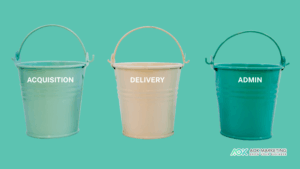Google’s Core Web Vitals have emerged as crucial metrics for assessing and improving website performance in web development and search engine optimization. These vitals not only influence user experience but also play a significant role in search engine rankings. This article delves into the essence of Core Web Vitals, explores techniques for enhancement, and highlights tools for effective measurement and monitoring.
Core Web Vitals
Core Web Vitals are a set of specific factors that Google considers important in a webpage’s overall user experience. They are a subset of factors that will be part of Google’s “page experience” score (essentially, Google’s way of sizing up your page’s overall UX). The Core Web Vitals metrics are:
-Largest Contentful Paint (LCP)
-First Input Delay (FID)
-Cumulative Layout Shift (CLS)
Let’s explore each of these in detail and discuss how to improve them.
A. Understanding Core Web Vitals metrics
Largest Contentful Paint (LCP)
LCP measures loading performance. It marks the point in the page load timeline when the page’s main content has likely loaded. This is important because it tells the reader that the URL is actually useful. Google wants LCP to occur within 2.5 seconds of when the page first starts loading.
First Input Delay (FID)
FID measures interactivity. It quantifies the experience users feel when trying to first interact with the page. This measurement is taken from whatever interactive element the user first tries to interact with (e.g., clicking a link, tapping on a button). Google wants pages to have an FID of less than 100 milliseconds.
Cumulative Layout Shift (CLS)
CLS measures visual stability. It helps quantify how often users experience unexpected layout shifts. A layout shift occurs any time a visible element changes its position from one rendered frame to the next. Google wants pages to maintain a CLS of less than 0.1.
B. Techniques for improving LCP, FID, and CLS
Improving Largest Contentful Paint (LCP)
- Optimize and compress images: Use modern formats like WebP and compress images without significant quality loss.
- Implement lazy loading: Load images and other heavy content only when needed.
- Minimize critical CSS: Inline critical CSS and defer non-critical CSS.
- Use a Content Delivery Network (CDN): Serve static assets from locations closer to users.
- Optimize server response time: Improve server-side code, use caching mechanisms, and ensure efficient database queries.
Improving First Input Delay (FID)
- Minimize JavaScript execution time: Reduce the impact of third-party code, use code-splitting to break up long tasks, and use Web Workers for time-consuming tasks.
- Optimize JavaScript loading: Defer or async load non-critical JavaScript.
- Remove unused JavaScript: Regularly audit and remove unnecessary code.
- Use browser caching: Implement effective caching strategies to reduce load on the server.
Improving Cumulative Layout Shift (CLS)
- Set size attributes on images and video elements: Always include width and height attributes or reserve the required space with CSS aspect ratio boxes.
- Avoid inserting content above existing content: Add new UI elements below the viewport and use transitions to minimize disruption.
- Use transform animations: Instead of animations that trigger layout changes, use transform animations.
- Ensure web fonts don’t cause layout shifts: Use font:display values like ‘optional’ or ‘swap’ and preload key web fonts.
C. Tools for measuring and monitoring Core Web Vitals
Google PageSpeed Insights
This tool provides an overview of how your page performs, with a detailed breakdown of opportunities and diagnostics. It uses both lab and field data, giving you a comprehensive view of your site’s performance.
Google Search Console
The Core Web Vitals report in Google Search Console helps you identify groups of pages that require attention, based on real-world usage data (field data).
Lighthouse
Available in Chrome DevTools, as a Chrome extension, or as a Node module, Lighthouse audits performance, accessibility, progressive web apps, and more.
Chrome User Experience Report
This report provides user experience metrics for how real-world Chrome users experience popular destinations on the web.
Web Vitals Extension
This Chrome extension measures the Core Web Vitals in real-time as you browse the web.
Chrome DevTools
The Performance panel in Chrome DevTools can help you dig deeper into your page’s performance and identify the root causes of poor Core Web Vitals scores.
WebPageTest
This tool allows you to run a free website speed test from multiple locations around the globe using real browsers and at real consumer connection speeds.
Implementing Core Web Vitals: A Strategic Approach
While understanding and improving Core Web Vitals is crucial, it’s important to approach this task strategically:
Prioritize: Focus on the most critical pages first, such as your homepage and key landing pages.
Test regularly: Web performance can degrade over time as new features are added. Regular testing helps maintain optimal performance.
Educate your team: Ensure that all stakeholders, from developers to content creators, understand the importance of Core Web Vitals.
Consider Core Web Vitals in design: When designing new features or pages, factor in how they might impact these metrics.
Monitor real-user data: While lab data is useful, real-user data provides the most accurate picture of your site’s performance.
Optimize for mobile: With mobile-first indexing, it’s crucial to ensure your Core Web Vitals scores are strong on mobile devices.
Balance performance with other priorities: While Core Web Vitals are important, they should be balanced with other business and user experience needs.
Conclusion
Core Web Vitals represent a significant shift in how Google evaluates web pages, placing a stronger emphasis on user experience metrics. By understanding these vitals, implementing techniques to improve them, and regularly monitoring performance using the right tools, website owners can enhance both user experience and search engine rankings.
Remember, optimizing for Core Web Vitals is not a one-time task but an ongoing process. As web technologies evolve and user expectations change, staying on top of these metrics will be crucial for maintaining a competitive edge in the digital landscape. By prioritizing Core Web Vitals, you’re not just optimizing for search engines, but creating a better, faster, and more stable web experience for your users.
About The Author
Khalid Essam
Khalid is the Chief of Staff at AOK. He collaborates with a team of specialists to develop and implement successful digital campaigns, ensuring strategic alignment and optimal results. With strong leadership skills and a passion for innovation, Khalid drives AOK’s success by staying ahead of industry trends and fostering strong client and team relationships.






